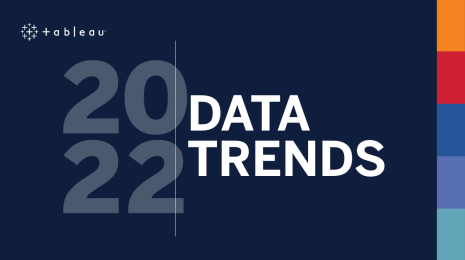Better government with data analytics: hats, cattle, and analytics

Welcome to Part One of our four-part blog series, Better Government with Data Analytics.
In my role as the Tableau Enterprise Architect for US Public Sector, I have the good fortune to travel across the country and work closely with our largest customers in state government. I consult, coach, and promote excitement about using Tableau at enterprise scale, and I’m encouraged by what I see happening with data right now around the country.
I do, however, encounter situations from time to time that are not great, i.e. where process is suboptimal, where people live in unjustified fear of their data, or where people work harder than smarter on something that delivers little. I also see organizations that are almost doing the right thing, but are a best practice or two, and some good advice away from moving the needle.
If you’ve heard me speak at any events before, you’ve probably heard one of these thoughts:
- Reporting is not, and never will be analytics
- Innovate, don’t replicate
- A dashboard without decisions is akin to style without substance
(I just made that last one up, and have not used it before, yet it is rather appropriate as the basis for my thoughts today.)
Dashboards without decisions: all hat and no cattle
Here in Texas, we have an interesting saying “they’re all hat and no cattle” which loosely translates to “You might look like a rancher with the fancy truck and shiny belt buckle, but take those away, and there’s simply nothing there.” Think style without substance, or appearance absent of value. Once you get past the surface, there’s no meat on the bone. Let’s translate this to the world of data, reporting (my least favorite word), and analytics in government.
Imagine a state government agency that is like every single other one across America. The agency is data-rich, and all of the data is unique and special. They create reports that are elaborate, impractical, and hard to use (the 227 page PDF I see at every agency). Keep in mind that these reports do not inform decision-making, and you can easily see where I’m going. Case in point, I work with an agency that does great things with Tableau, but when I asked recently what outcomes they were driving with a particularly cool dashboard, I was stunned by the answer. The answer was simply, we’re not sure.
Now, I’m never one to antagonize, but I asked the obvious question: “What are you actually doing with your data then?” They love their dashboards, and get information on trends and hotspots faster than ever before, but the output is not being used to drive outcomes—such as informing inventory decisions, changing behavior, or driving policy. Perhaps I’m a bit myopic to think that every dashboard should support a decision, but I believe it comes down to mindset, and I’ll elaborate on that.
I work with another organization that recently expanded its analytics capability with Tableau to identify new, tangible business value. Before this, they “ran” their business with roughly 35,000 reports. Think about that. How many decisions can be made from 35,000 reports? Reports are lists of things that are filtered, and maybe summarized to provide the semblance of some basic analysis. I knew that there was a better way, and it, too, comes down to mindset. This organization changed its mindset, and is looking at its data from a new analytical lens, versus taking 35,000 reports and converting them as-is. They are innovating not replicating—and realizing that from lists of things they get no-things.
Tableau public sector framework for elevating leadership and decision making with analytics
The framework below outlines some critical steps to begin the not-that-long, yet very fruitful journey toward becoming an analytically-forward organization.

We have implemented frameworks like this with many custormers and I’m confident that if you follow it, stick with it, and encourage all members of your organization to adopt it, you will discover tangible business value.
As an encouragement, other posts in this series dive deeper and offer additional advice on how to elevate your leadership and decisionmaking with Tableau.
This blog is part of a series for state, local, and education data rock stars who are interested in gaining deeper insights about how to leverage data to improve results, and build a culture of analytics within their organizations. To learn more about what Tableau can do for your organization, please visit our State and Local Government Analytics page.
相关故事
Subscribe to our blog
在您的收件箱中获取最新的 Tableau 更新。








